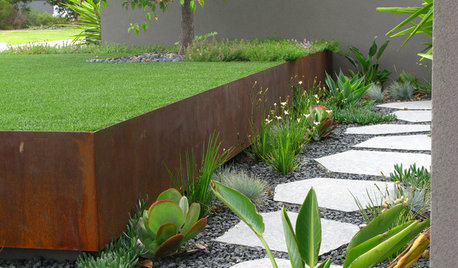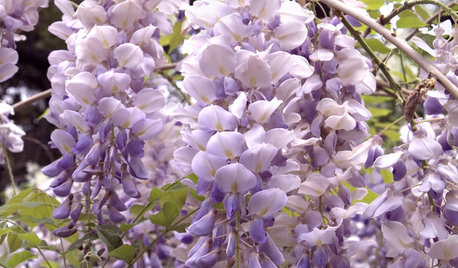new spring planted lawn question
jacob.morgan78
9 years ago
Related Stories

LANDSCAPE DESIGN7 Questions to Ask Before Laying Stepping Stones
These broken-up pathways invite you to put a spring in your step — while adding functionality to the garden
Full Story
GARDENING GUIDESHow to Plant a New Lawn From Seed
Choose from more grass varieties and save money over sod by starting your lawn from seed
Full Story
GARDENING GUIDESWhat Are Your Spring Gardening Plans?
Tearing out the lawn? Planting edibles? Starting from scratch? Tell us what you plan to change in your garden this year
Full Story
GARDENING GUIDESNo-Regret Plants: 5 Questions Smart Shoppers Ask
Quit wasting money and time at the garden center. This checklist will ensure that the plants you're eyeing will stick around in your yard
Full Story
LANDSCAPE DESIGNGet Along With Less Lawn — Ideas to Save Water and Effort
Ditch the mower and lower your water bill while creating a feast for the eyes with diverse plantings and gathering places
Full Story
LANDSCAPE DESIGN7 Low-Maintenance Lawn Alternatives
Turf isn't the only ground cover in town. Get a lush no-grass lawn with clover, moss and other easy-care plants
Full Story
SAVING WATERHouzz Call: Are You Letting Go of Your Lawn?
Many facing a drought are swapping turf for less thirsty plantings. If you’re one of them, we’d like to hear about it
Full Story
GARDENING GUIDESHow to Plant a New Lawn From Sod
Take the quick-start route to turf with sod; these installation guidelines will help ensure a healthy and long-lasting lawn
Full Story
SPRING GARDENINGSpring Planting: Wonderful Wisteria
Classic Vines Add Fragrance, Color and Romance to Garden Designs
Full Story
GARDENING GUIDESGreat Design Plant: Amelanchier Signals Spring With Airy White Blooms
With roughly 20 species of serviceberry native to the U.S., bees can feed on the early-season blooms while birds enjoy the summer berries
Full Story






dchall_san_antonio
CPTK
Related Professionals
Middle River Landscape Architects & Landscape Designers · Oconomowoc Landscape Architects & Landscape Designers · Brookside Landscape Contractors · Bound Brook Landscape Contractors · Canby Landscape Contractors · Canton Landscape Contractors · Centereach Landscape Contractors · Forest Hills Landscape Contractors · Mastic Beach Landscape Contractors · North Potomac Landscape Contractors · Rancho Santa Margarita Landscape Contractors · Vancouver Landscape Contractors · Chicago Ridge Landscape Contractors · Rowlett Swimming Pool Builders · West Covina Swimming Pool Buildersdchall_san_antonio
CPTK
jacob.morgan78Original Author
jacob.morgan78Original Author
joneboy
yardtractor1
yardtractor1
jacob.morgan78Original Author
yardtractor1
CPTK
yardtractor1
gsweater
CPTK
gsweater
jacob.morgan78Original Author
gsweater
jacob.morgan78Original Author
yardtractor1
jacob.morgan78Original Author
yardtractor1
CPTK
bama66